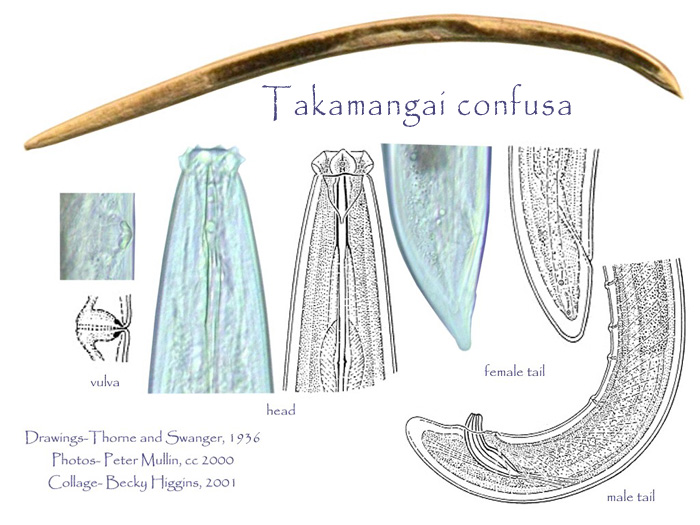
|
Syn.:
|
Dorylaimus confusus Thorne, 1939
Eudorylaimus confusus (Thorne, 1939) Andrássy, 1959 Thonus confusus (Thorne, 1939) Andrássy 1986. nec. Thonus confusus Jana & Baqri, 1982 |

|
|
Bodies of both sexes cylindrical, the anterior third of the neck somewhat convex-conoid to the lip region which is about one-third as wide as neck base. Posteriorly the body is convex conoid to the bluntly conoid tail. Transverse striae excessively fine. Lateral cords about one-eighth as wide as body, containing many, irregular sized granules. Lip region discoid, the lips angular and prominent, set off by deep constriction. Spear longer than width of lip region, aperture occupying one-third of its length. Guiding ring single. Esophagus enlarged in posterior two-fifths by gradual expansion. Cardia cylindrical, one-fourth as wide as body and slightly longer than wide. Intestine apparently about eight cells in circumference with scattered irregular sized granules. Vulva transverse, with conspicuously cuticularized labia. Vagina extending two-fifths across body. Ovaries short, symmetrical, reflexed one-third the distance back to vulva. Eggs two and one-half times as long as body width. Female prerectum length about twice body width. Spicula thick, slightly arcuate. Ventromedian supplements four, uniformly spaced, well anterior to spicula.
Diagnosis: Dorylaimus with the above measurements and general description. Most closely related to D. tenuidens from which it differs in the bluntly rounded, arcuate tail, thick short spicula and longer spear aperture. From D. projectus it differs in details of the lip region and vulvar form. At first glance the lip region of this species indicates a species of Discolaimium but the stronger anterior portion of the esophagus and broad lateral cords place it in Dorylaimus.
Habitat: Five females and three males from soil on foothills near Citrus Experiment Station, Riverside, California, U.S.A.
 |
 |